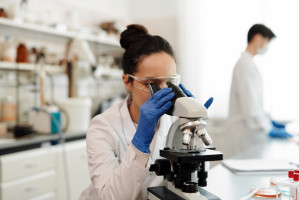
A single cell contains 2-3 meters of DNA, meaning that the only way to store it is to package it into tight coils.
The solution is chromatin: a complex of DNA wrapped around proteins called histones.
In the 3D space, this complex is progressively folded into a multi-layered organisation composed of loops, domains, and compartments, which makes up what we know as chromosomes.
The organisation of chromatin is closely linked to gene expression and the cell’s proper function, so any problems in chromatin structure can have detrimental effects, including the development of cancer.
A common event in around 30% of all human cancers is “whole genome doubling” (WGD), whereby the entire set of chromosomes in a cell is duplicated.
WGD leads to genomic instability inside the cell, which can result in chromosomal alterations and other mutations that contribute to the development of cancer.
Now, a team of researchers led by Elisa Oricchio at EPFL and Giovanni Ciriello at UNIL, has uncovered a new clue as to how WGD drives cancer.
In a study published in Nature, the scientists show that WGD can affect the 3D organisation of the chromatin inside the cell through a phenomenon called “loss of chromatin segregation”.
The researchers looked at cells that lack the tumour suppressor gene p53, making them prone to WGD.
They found that WGD leads to a reduction in the segregation of chromatin’s structural elements, such as loops, domains, and compartments, upending its careful organisation in the cell.
The result is a mixing of genetic material that is normally kept separate, changing the position of genomic regions in the 3D space, known as “sub-compartment repositioning.”
This sets the stage for the activation of oncogenes, which are genes that contribute to the development of cancer.
The researchers also found that the effects of WGD on chromatin organisation are largely independent of chromosomal alterations, meaning that loss of chromatin segregation and chromosomal instability are complementary mechanisms that work together to promote cancer development.
The work provides a new way of looking at the role of WGD and chromatin organisation in the development of cancer.
In the future, highly multiplexed single-cell molecular profiles, combined with barcoding technologies and new computational approaches, could help to further uncover what role the disorganisation of chromatin’s 3D structure plays in transforming a cell into a cancerous one.